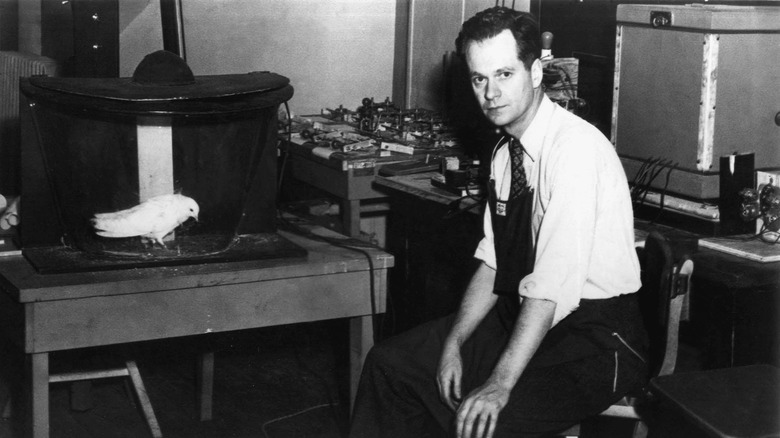All About The Pigeon-Operated Bombs Developed During WWII
World War II was largely defined by air raids. Both sides deployed hundreds of bombers for the dual purpose of striking military targets and the enemy civilian populace itself. The bombings of London, Dresden, and Tokyo were some of the most destructive campaigns of the war, with individual bombing runs leaving tens of thousands dead. However, while unguided bombs reigned during this conflict, the guidance systems we associate with modern warfare were born during this time. Both the Allies and Axis developed munitions that were remotely guided by radio, wire, and television in order to accurately strike specific targets, with one American drone test accidentally killing Joseph Kennedy Jr. (older brother of President John F. Kennedy), according to Business Insider.
Unfortunately, weapon guidance also took the form of actual pilots. In addition to their late-war use of manned aircraft to crash into Allied ships and bombers, the Axis powers also produced purpose-built munitions meant to be piloted by actual personnel. The Japanese developed the manned Ohka rocket for use by Kamikaze pilots, while the Germans made a prototype for a (never deployed) piloted version of their V-1 cruise missile (via Stream News). Few realize, however, that on the other side of the conflict America considered a manned bomb of their own. Only it would have been guided not by a human, but by a pigeon.
Though never deployed, the pigeon-guided bomb showed promise
Pigeons were no strangers to human warfare. In World War I thousands were used to carry messages to and from the front lines. They were used for this purpose in World War II as well, with both sides also using falcons to capture the other side's pigeons (via National D-Day Memorial). The idea of using the birds as bomb-guidance systems, however, was the brainchild of psychologist B.F. Skinner (pictured above). Skinner was well acquainted with how the birds responded to stimuli through his 1930s casino-addiction experiments, and believed this his research could help the war effort.
According to Smithsonian Magazine he constructed a model warhead, within which were three screens that projected the outside. Through positive reinforcement the harnessed pigeon inside would peck at the screens whenever the target appeared. This activated control surfaces on the rocket that would orient it toward what the pigeon was focused on. According to the Skinner's data it is possible that this project could have led to a very accurate weapon system, and was impressive enough to receive government funding. Fortunately for the pigeons his tests were static, and with the project rejected by military planners none lost their lives to this concept (via Popular Mechanics).

